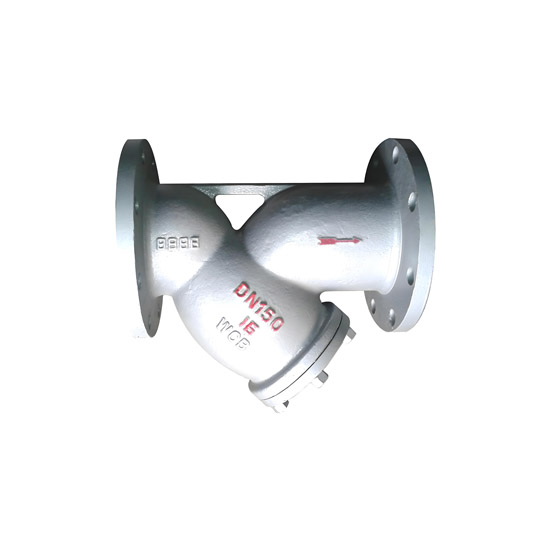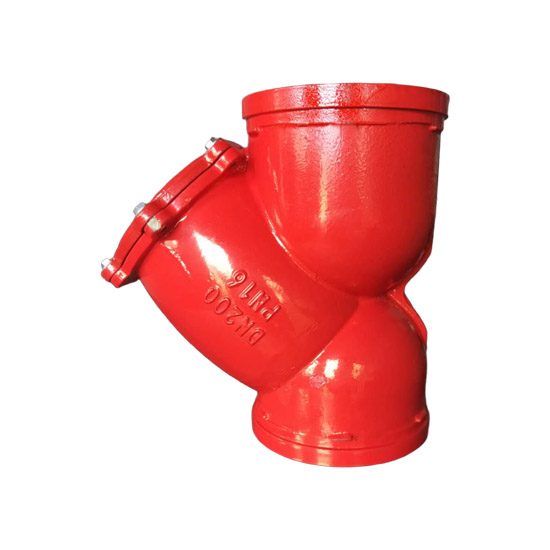1. Product Overview
Full Name: Y-Type Strainer (also known as Pipeline Filter or Dirt Separator)
Definition: A Y-shaped pipeline filtration device installed in fluid systems. It removes solid particles, rust, welding slag, and other impurities from the medium via a mesh screen, protecting downstream valves, pumps, instruments, and other equipment from wear, blockage, or failure, ensuring stable system operation.
Alternate Names: Y-Type Dirt Separator, Y-Type Filter Valve, Pipeline Coarse Filter
Core Functions:
Impurity Interception: Physically filters out mechanical impurities such as sand, metal debris, and sediment, extending equipment lifespan.
Downstream Equipment Protection: Reduces wear on pump impellers, valve sealing surfaces, heat exchangers, and other precision components, lowering maintenance costs.
Easy Maintenance: Removable mesh design allows for online cleaning or replacement without disassembling the entire pipeline.
2. Design and Manufacturing Standards
2.1 Design Specifications
Basic Standards: Complies with HG/T 21637-1991 “Basket-Type Filters for Pipelines” or SH/T 3411-1999 “Steel Pipeline Filters for Petrochemical Use,” defining structural dimensions, filtration precision, and pressure resistance.
Metal strength design follows GB/T 150 “Pressure Vessels” to ensure housing safety under working pressure.
Flanged connections comply with GB/T 9113 “Integral Steel Pipe Flanges,” ASME B16.5 (for international projects), or equivalent engineering standards such as HG/T 20592, ensuring compatibility with pipeline flange interfaces.
Material Selection:
Housing / Flanges:
Carbon Steel (Q235B): Suitable for water, air, and neutral oils. Surface treated with hot-dip galvanizing (zinc layer ≥85μm, GB/T 13912) or protective painting.
Stainless Steel (304/316): Resistant to aggressive environments (seawater, acids/alkalis, food-grade media), meeting sanitary or special application requirements.
Ductile Iron (QT400-15): Enhanced vibration and corrosion resistance, suitable for buried or high-vibration pipelines.
Mesh Screen: Made of stainless steel (304/316), double-layer woven mesh or perforated plate. Strength complies with GB/T 4237 “Hot-Rolled Stainless Steel Plates and Strips,” ensuring deformation resistance and corrosion durability.
Sealing Components: NBR or FKM rubber sealing rings, oil- and temperature-resistant (-40°C to 80°C for standard conditions; FKM recommended for high-temperature steam). Hardness: 60±5 Shore A (HG/T 2579 “Oil-Resistant Rubber Sealing Materials”).
Filtration Precision Design:
Mesh size (mesh/inch) selected based on medium characteristics and downstream equipment sensitivity:
Coarse Filtration (pump/valve protection): 18–30 mesh (aperture approx. 0.6–1.2 mm)
Medium Precision (general control): 40–100 mesh (aperture 0.15–0.4 mm)
Fine Filtration (instruments/nozzles): 100–480 mesh (aperture ≤0.15 mm)
2.2 Manufacturing Process
Production Process Control: Complies with GB/T 19001 Quality Management System, covering raw material inspection (material certificates, hardness tests), machining, assembly, and pressure testing.
Housing Welding: Flange-to-pipe welding follows GB 985.1 “Recommended Weld Groove.” Weld strength ≥ base material. Post-weld stress relief applied. Pressure-bearing welds inspected per JB/T 4730.2 “Radiographic Testing,” Grade I qualified.
Surface Treatment: Carbon steel parts hot-dip galvanized (GB/T 13912) or stainless steel pickled and passivated. Paint adhesion ≥ Grade 2 (GB/T 1720).
Factory Inspection:
Pressure Test: Each unit undergoes hydrostatic testing at 1.5× nominal pressure for 30 minutes with no leakage (compliant with GB/T 13927 “Industrial Valve Pressure Testing”).
Mesh Integrity Test: Inspects mesh weld points for strength and deformation-free condition, ensuring reliable impurity interception.
Operational Flexibility Test: Drain cap or flange cover opens smoothly without jamming, ensuring maintenance convenience.
3. Technical Specifications and Parameters
Nominal Diameter (DN): DN15 to DN2000 mm (covers full industrial pipeline range)
Working Pressure Rating: PN0.6, 1.0, 1.6, 2.5 MPa (custom high-pressure options available)
Applicable Temperature:
Standard Conditions: -40°C to 80°C (NBR seal)
High-Temperature Conditions: ≤250°C (steam, etc. requires FKM seal and heat-resistant materials)
Applicable Media: Fresh water, seawater, wastewater, hot/cold water, oils (crude/lubricating), air, coal gas, steam (≤250°C), and particulate/powdered fluids
Connection Types:
Flanged Connection: RF raised face (PN ≤ 1.6 MPa) or MFM male-female face (PN ≥ 2.5 MPa), compatible with GB/T 9115 “Steel Pipe Flanges” or ASME B16.5
Butt Weld Connection (BW): Socket weld suitable for small-diameter clean pipelines
Threaded Connection (NPT/BSPT): Used for instruments or small pipelines requiring quick installation
Mesh Material: Stainless steel 304/316 woven mesh or laser-perforated plate, corrosion resistance matched to medium aggressiveness
Pressure Drop Range: Initial pressure loss typically 0.03–0.1 MPa (higher flow or impurity buildup increases pressure drop; mesh cleaning required)
4. Operating Principle
Impurity Interception Mechanism: Fluid enters the Y-shaped chamber from the main pipe and is redirected through the mesh screen (arranged in a conical or cylindrical inclined layout). Solid impurities are blocked by mesh apertures or inertia, settling in front of the mesh or at the bottom of the drain chamber.
Clean fluid passes through the mesh and exits via the outlet to downstream pipelines or equipment.
Gravity-Assisted Drainage: Inclined mesh design allows impurities to slide down under gravity to the drain end (flange cover or plug), reducing surface buildup and extending filtration cycles.
Convenient Online Maintenance: Only upstream and downstream valves need to be closed. The drain cap can be opened to remove and clean the mesh without interrupting system operation. (Flanged structure supports quick disassembly)
Hot Tags: Filter /



